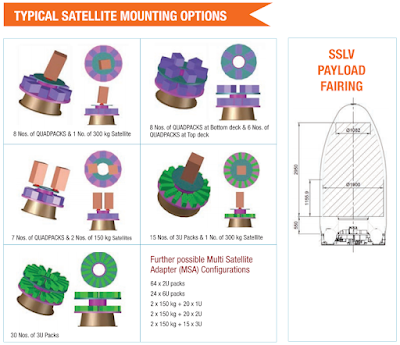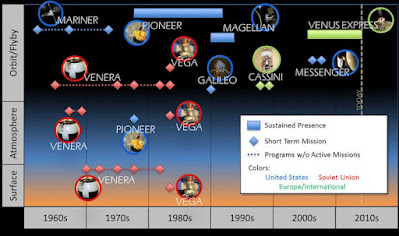What are Analog Space Missions?
Analog space missions are a unique approach to space exploration, involving the simulation of extraterrestrial environments on Earth. These missions offer a valuable platform for scientific research, technological testing, and astronaut training, providing crucial insights into the challenges of spaceflight.
Key Features of Analog Space Missions
-
Earth-Based Simulations: These missions utilize terrestrial locations that closely resemble extraterrestrial environments, such as deserts, volcanic regions, and isolated research stations.
-
Controlled Environments: Simulated environments are meticulously designed to replicate specific aspects of spaceflight, including microgravity, radiation exposure, isolation, and confinement.
-
Scientific Research: Analog missions serve as platforms for conducting experiments and studies on a wide range of topics, including human physiology, psychology, technology, and resource utilization.
-
Crew Training: These missions provide invaluable training opportunities for astronauts, allowing them to hone their skills and practice procedures in realistic conditions.
-
Technology Testing: New technologies and equipment are rigorously tested and refined in analog missions before being deployed in actual space missions.
Real-World Examples of Analog Space Missions
- NASA's HI-SEAS: This program simulates life on Mars in the remote volcanic environment of Hawaii.
- Mars Desert Research Station (MDRS): Located in the Utah desert, MDRS offers a Mars-like setting for research and training.
- European Space Agency's Concordia Station: This Antarctic research station replicates the isolation and extreme conditions of space exploration.
- ISRO's Analog Space Mission: India's space agency has recently launched its first analog space mission in Leh, Ladakh, to simulate life in an interplanetary habitat.
ISRO's Analog Space Mission: A Giant Leap for India
The Indian Space Research Organisation (ISRO) made a significant stride in its space exploration endeavors by launching India's first analog space mission in Leh, Ladakh, on November 1, 2024. This groundbreaking initiative aims to simulate the challenges of life in an interplanetary habitat, paving the way for future human space missions.
Key Features of ISRO's Analog Mission
- Extreme Environment: The mission is conducted in the harsh, high-altitude environment of Ladakh, which offers a unique setting to replicate the challenges of extraterrestrial conditions.
- Simulated Habitat: A specially designed habitat is set up to mimic the confined and isolated conditions of a space station or a lunar base.
- Scientific Experiments: The crew members will conduct various scientific experiments to study human physiology, psychology, and the impact of isolation on cognitive functions.
- Technological Demonstrations: The mission will also serve as a platform to test and demonstrate advanced technologies, such as life support systems, communication systems, and robotics.
Significance of ISRO's Analog Mission
- Preparing for Future Missions: By simulating the challenges of long-duration space missions, ISRO aims to gain valuable insights into human factors, technological requirements, and operational procedures.
- Developing Indigenous Capabilities: The mission will help India develop indigenous capabilities in space technology, human spaceflight, and life support systems.
- Inspiring the Next Generation: The mission will inspire young minds and encourage them to pursue careers in science, technology, engineering, and mathematics.
ISRO's analog space mission marks a significant milestone in India's space program. By undertaking such ambitious projects, India is positioning itself as a major player in the global space exploration community. As India continues to push the boundaries of space exploration, analog missions will play a crucial role in ensuring the success of future human missions to the Moon, Mars, and beyond.
Benefits of Analog Space Missions
- Risk Mitigation: By testing technologies and procedures in controlled environments, analog missions help reduce the risks associated with actual space missions.
- Scientific Advancement: These missions contribute significantly to our understanding of the human and technological challenges of space exploration.
- Public Engagement: Analog missions inspire public interest in space exploration and STEM fields.
- International Collaboration: Analog missions often involve international cooperation, fostering scientific exchange and collaboration.
The Future of Analog Space Missions
As we venture deeper into the cosmos, analog space missions will continue to play a pivotal role in shaping the future of human spaceflight. By providing a realistic testing ground for technology, human factors, and operational procedures, these missions ensure the success of our ambitious endeavors.
Find Jai on Twitter | LinkedIn | Instagram
You may also want to read more about space based systems here.
References
- NASA's HI-SEAS:
https://www.hi-seas.org/ - Mars Desert Research Station:
http://mdrs.marssociety.org/ - European Space Agency's Concordia Station:
https://www.esa.int/Science_Exploration/Human_and_Robotic_Exploration/Concordia - ISRO's Analog Space Mission:
https://www.isro.gov.in/ - NASA's Human Research Program:
https://www.nasa.gov/hrp/ - ESA's Human and Robotic Exploration:
https://www.esa.int/Science_Exploration/Human_and_Robotic_Exploration - Canadian Space Agency's Human Space Flight:
https://www.asc-csa.gc.ca/eng/ - Japan Aerospace Exploration Agency's Human Spaceflight Program:
https://humans-in-space.jaxa.jp/en/ - Roscosmos' Human Spaceflight Program:
https://en.wikipedia.org/wiki/Roscosmos





























